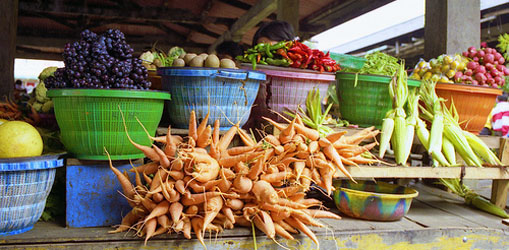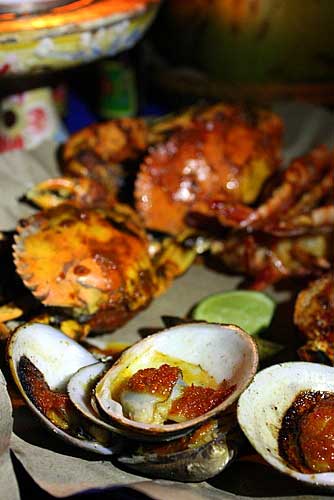The Balinese worship Dewi (’goddess’) Sri as the goddess of rice and prosperity. They even devote special places of worship for her and dedicate a special day for her each month called ‘Hari Bhatari Sri’, which falls on the ‘Sukra Umanis’ Fridays of each month of the Balinese calendar (this month it falls on Friday 17th).
The history of agriculture started since ancient times as humans sought after a better living subsequent to nomadic hunting and gathering. They decided to stay put in an area that deemed to provide sustenance, and started to tend lands and harvest.
Rice perhaps is not the first plant they familiarized with, yet it is this single plant that has now become the staple diet among the societies across the archipelago, including Bali.
Food and nourishment are fundamental necessities, thus agriculture is in a very important position as it is depended upon by many people. A successful harvest becomes a determinant for the life sustainability of the surrounding societies.
Balinese societies believe that a great force aides them in achieving good harvests. As though they believe that it is such power that created the rice stalk for their lives. And that great power is manifest in Dewi Sri the goddess of rice and fertility. Dewi Sri is embodied in the culture and prevails through the generations.
Miguel Covarrubias, an anthropologist, once stayed in Bali and wrote the impressive book, Island of Bali, which explains Bali comprehensively . Through the book he also tells of the legend of the origins of rice in Bali. It goes that in the beginning the Balinese only knew sugar canes. Dewa (’god’) Wisnu, known as the affectionate and protecting god, wanted to create a better food for his human subjects. His marriage with Sang Hyang Pertiwi or Mother Earth gave birth to the rice which took over as the staple food. God Indra then taught the humans how to sow rice and harvest.
This legend holds a very deep meaning. This is not indispensable from the local genius of the Balinese who never forget to devote and make use of symbols to express their spiritual dedications.
God Wisnu is personified as water, while Pertiwi is earth. Fertility and prosperity will only happen if the two unite harmoniously. If Pertiwi is present without Wisnu, then there would be drought. If Wisnu were to be present alone then there would be floods. Both would spell an unsuccessful harvest.
Dewi Sri is personified as rice emerges through the blend between water and earth. Afterwards another interpretation of the symbolism emerged that Dewi Sri was the consort of Dewa Wisnu and Wisnu can only carry out his duties as protector with Dewi Sri by his side. Logically, life would only exist on earth if there was fertility.
Dewi Sri fills a significant position in Bali. Bali is agrarian. Even up until now when tourism sweeps and spreads rapidly in Bali, according to the statistical data on land usage – most is for agricultural. Half of the demography also deals in the agricultural sector.
The Balinese worship Dewi Sri as a motherly figure. At home there are always flower offerings placed at the rice barn or rice container. Farmers worship her by erecting small shrines amidst their green rice terraces. Traditional irrigational organizations in Bali known as Subak also have a dedicated temple for Dewi Sri known as the Pura Subak.
In the rice fields, Dewi Sri also referred to as Nini Pantun or Dewi Padi or Ibu Padi. We can observe Nini Pantun through the Ngusaba Nini ceremony – a ceremony for celebrating harvests. This ceremony is also meant as to “carry” the spirit of Dewi Sri towards the rice barn or lumbung.
Farmers make a Nini Pantun from two ties of rice stalks. These two represent the two general opposites in nature – male and female, north and south, positive and negative. The principle is that prosperity is only achieved once two elements are combined. The two ties are bound together on a length of wood which is stuck into a cleft near the primary irrigational channel. Then after, the harvest commences.
In this ritual besides making offerings, farmers also make decorations that symbolize Dewi Sri, namely the Cili. Cili are made of lontar or palmyra palm leaves and is shaped in the form of a female figure.
The word Cili probably evolved from the word Cilik that means small or petite. The ever expanding creative process has made way to the Cili in forms of Chinese coins or forms of traditional hard flour cakes. Cili not only can be used for ceremonies connected to rice but also other ceremonies including the manusa yadnya or human rites such as weddings. Lately Cili has been used for decorations and has become somewhat an icon for Bali.








